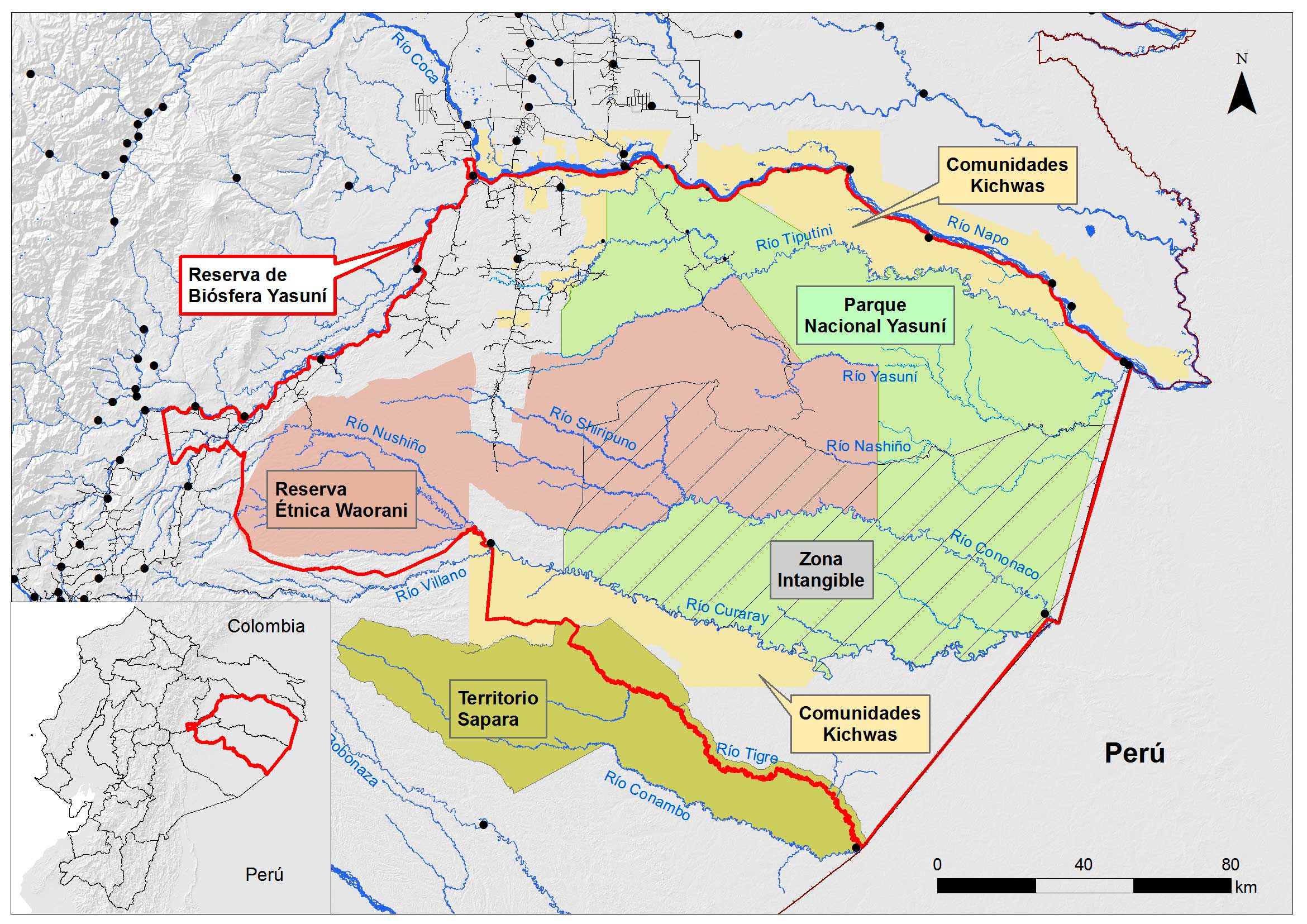A landscape representing eastern Ecuador’s tropical lowland ecosystems
About the Yasuní Biosphere Reserve
The 2.7 million hectare Yasuní Biosphere Reserve (YBR), designated a Biosphere Reserve by UNESCO in 1989, is one of the richest biodiversity hotspots on the planet and also one of the last tracts of pristine, continuous tropical forests in eastern Ecuador. The YBR is strategically located at the intersection of the Amazon, the Andes, and the equator. At its core, the YBR contains the one million hectare Yasuní National Park (YNP). This tropical moist forest system is one of the world’s biodiversity jewels, containing some 1,300 tree species, 610 bird species, more than 268 fish species, and at least 200 species of mammals, including lowland tapirs (Tapirus terrestris), white-lipped peccaries (Tayassu pecari), jaguars (Panthera onca), bush dogs (Speothos venaticus), short-eared dogs (Atelocynus microtis), and 13 species of primates.
The YBR is also known for its exceptional cultural value. It is home to the last representatives of the Waodani ethnic group and two indigenous groups in voluntary isolation for whom the 800,000 hectare Tagaeri–Taromenane Intangible Zone was declared. This landscape is also home to Kichwa, Shuar and non-indigenous colonist communities. Together, the YNP, the Waodani Ethnic Reserve, and the Tagaeri–Taromenane Intangible Zone form the Yasuni Biosphere Reserve.
The area where the YBR is located is highly vulnerable to the impacts of the development of activities such as oil exploitation and road construction, as well as illegal activities, such as logging, commercial hunting, and wildlife trafficking.
Conservation Challenges
